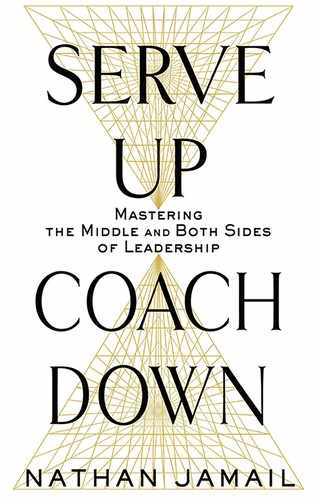CHAPTER 16
Maintaining the Bridge
When I bring coaching and leadership programs into an organization, I get asked about return on investment: “How will we measure ROI? What kind of tests do you do so we can assess the success of your program?” The organization is looking for what most training companies offer to demonstrate their effectiveness. To show their results, they test the employees. These tests reveal how many people remember what they learned, say they are doing what needs to be done, and lay out what work still needs to be done.
There's a word I want to use to describe these tests, but I won't say it in polite company. Let's just say they're crap. When a company asks me what kind of tests I do, I say, “None.” The test of my success is in helping a company bridge the knowledge gap to lead and coach better, which is not found on a piece of paper. Look for it in real life! If we implement something in January and we don't hear the words and find people doing the activities that I trained them on in June, it didn't work.
So how do we go from having the will and skill and creating a high-intensity environment to sustaining greatness? By making knowledge a discipline.
Old Habits Die Hard
Remember: Humans are creatures of habit. We prefer the comfort of the status quo to disruption. We like change when it makes things more convenient as consumers like Uber or Amazon but hate it when it makes us uncomfortable. In my experience, only about 1 percent—the real doers in an organization—can implement knowledge right away and sustain it. Almost everyone else has or continues to fall outside this category of employees and leaders, including me at one time. Does this mean most people are losers and should be fired? Some, but most should not. They are simply doing less than they are capable of doing or willing to do because they have not learned to serve up and coach down to overcome a lack of will or lack of skill, create a high-intensity environment, and then sustain that knowledge.
Leaders in the middle can do everything right to bridge the knowledge gap by serving up and coaching down, but without a change in behavior, they will end up where they started months later. This is true even at the companies whose trainers' tests showed the company was implementing the knowledge because the tests measured the employees' knowledge after each training showed improvement. But there is no a written test for execution—for showing what the people did to bridge the knowledge gap.
Think you're an exception and part of the 1 percent? Ask yourself these questions: Have you never known you should be doing something better or with more discipline and didn't? Have you ever changed your behavior and then stopped changing, justifying stopping it with a rationalization, excuse, or blame of someone or something? If your answer is no, congratulations! The rest of you should do the following exercise before continuing:
- Write down three things you know you should be doing as a leader in the middle that you are not committed to doing today.
- After you write your list, give it to your boss, a mentor, or someone whom you trust to hold you accountable and ask them to do exactly that: hold you accountable over the next ninety days to doing those three things, no excuses.
- If it works, add three more, and do it again and again until you run out of three things.
- If it doesn't work, reread this part of the book and ask yourself if you really have the will to be doing what you are doing and get better as a leader in the middle by serving up and coaching down.
![]()
Final Considerations: The Knowledge Gap
The knowledge gap is a real issue and all the ensuing outcomes, good and bad, are the results of the leader in the middle's decisions and actions. Next time you face this gap in business or life, ask yourself: Is it a lack of will or lack of skill? Lack of will is a choice, and allowing lack of will is never the right choice. Lack of skill requires the commitment of the “player” and the “coach” to get better at what they do.
Some people have the ability and skill but don't have the will and discipline. Mandate it all or mandate they quit. No one likes to work hard and feel like they are failing. The harsh thing is to allow people to remain in this state of self-destruction. The selfless thing to do is to empower them to match their will with their skills and help them find personal success elsewhere.
The knowledge gap is only present when someone decides not to execute and a leader decides to accept it. To achieve great success in anything, success only comes when you believe in what you're doing and see the reward to be worth the sacrifice you must make to achieve it.
Return on investment is not in how much the employees know but how much they continue to do in the weeks, months, and year ahead. That is your serve up mindset. The company spent money for the keynote or training to get this knowledge. Everyone agrees it is important. Your job as the leader in the middle is to make sure that everyone on the team continues to believe and changes their behavior to make the knowledge a sustainable part of a high-intensity environment.
![]()
